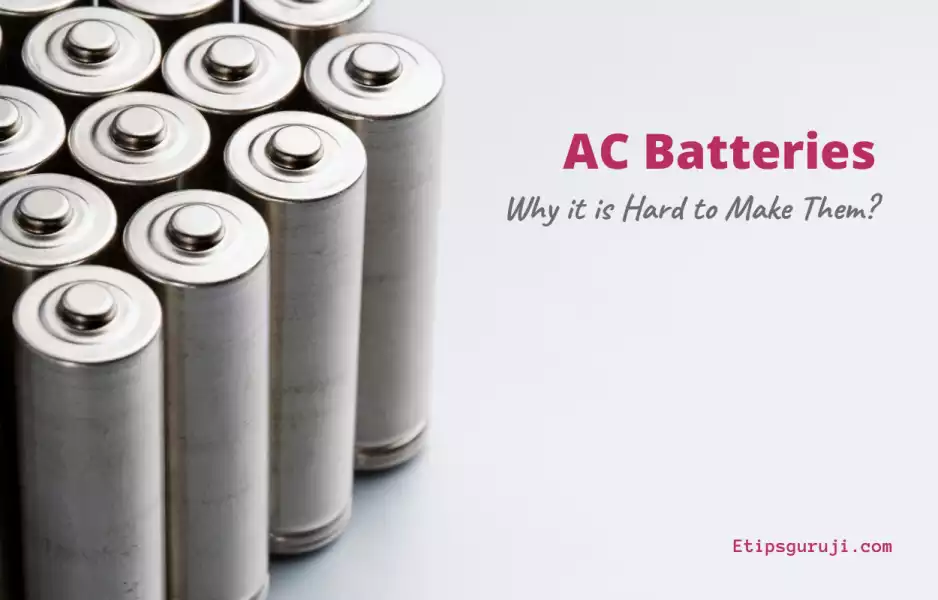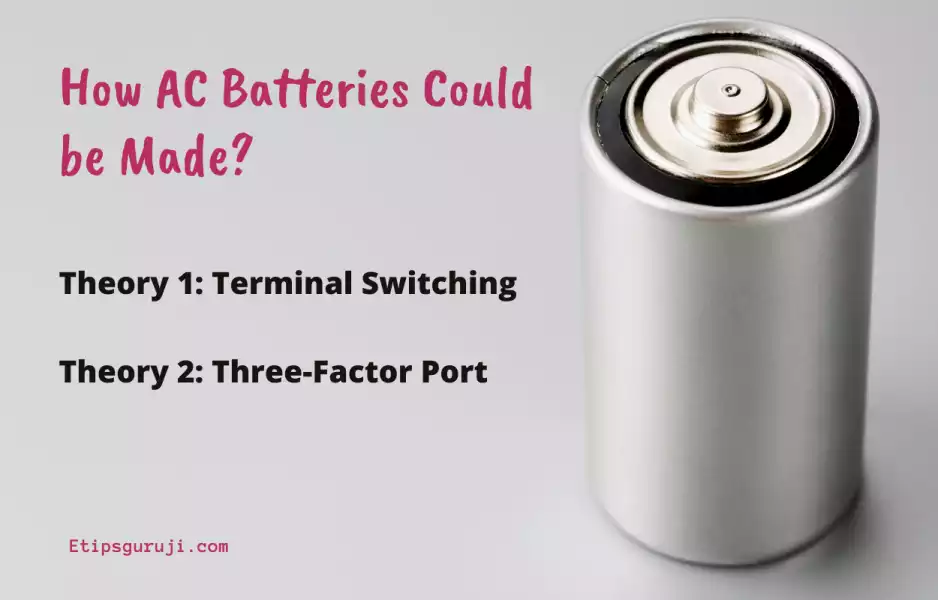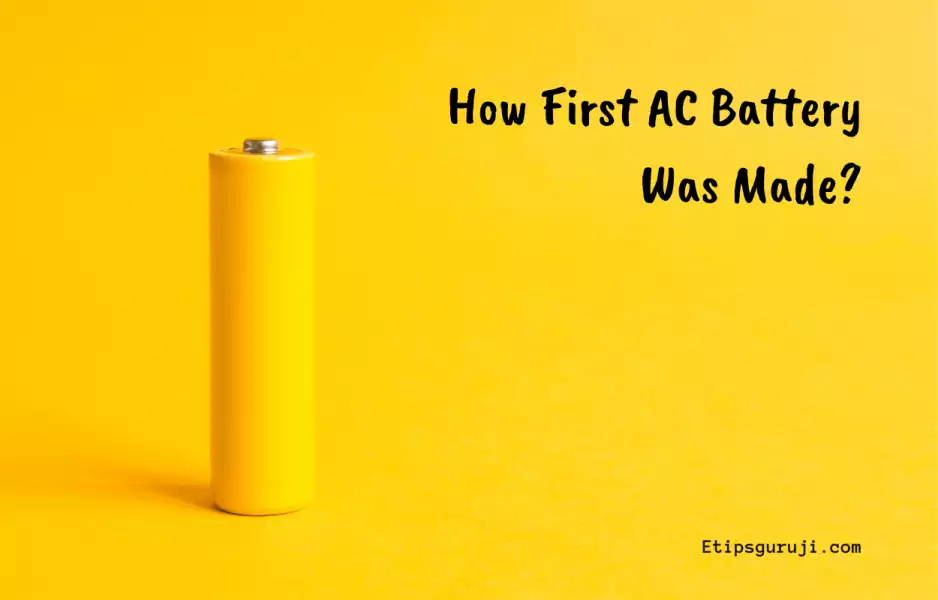AC Batteries: Why it is Hard to Make Them?

AC Batteries store energy in form of DC but output only AC current. It was first made by the AC Biode company. Majorly, these batteries have in-built circuitry (just like Inverters) which automatically provides AC output by converting the DC output of the battery internally.
Let’s know more about the AC Batteries in detail.
Why Is It Hard to Make an AC Battery?
The reason why you can’t store AC in batteries is that the frequency keeps changing in the AC supply. It changes its Polarity (wave direction) up to 50 to 60Hz. This means the battery’s terminal is changing at the rate of 5o to 60 times, which makes it very hard to make AC Batteries.
On the contrary, the DC battery has specific terminals: anode (negative) and cathode (positive), but in the case of a true AC Battery, these terminal changes at the rate of 50 to 60 cycles per second, which makes it practical to switch the terminal at that speed.
How AC Batteries Could be Made? (Theories)

To make an AC battery first you’ll need to get familiar with all the terms and functions related to it such as Current, Frequency, Cycle, Phases, Terminals, etc. There are two methods to do so or we can say they are just theories:
Theory 1: Terminal Switching
In normal DC batteries, there are two terminals and the voltage flows in a single direction (forward). In AC Voltage, the current flows backward and then forward again.
To make AC voltage work in a battery, you’ll need a high-end machine that can switch the wires on the battery terminals alternatively with the speed of 50 to 60 times per second (which again I stated earlier, not possible)
This theory explains the significance of the Neutral wire in an alternating current circuit, as it allows the circuit to return to its original source at the same speed as the Phase wire.
Theory 2: Three-Factor Port
Except for Anode & Cathode electrodes, you’ll need a third factor or maybe an electrode to balance out the charges and maintain the speed between the currents.
A company has tried this theory and is almost successful with it. The battery structure has an electrode called BIODE between anode and cathode. Biode is a special terminal that acts as both anode and cathode hence making it work. The development of the battery is still in the early phase and it took a long time to get a real one from the market.
Is it Possible to Make an AC Batteries?
Yes, it is not possible to make AC batteries, and as told earlier one of the companies named AC Biode made and patented the world’s first AC batteries. The concept was invented in April 2019 by Naotsugy Kubo.
It was just an impossible concept till the company came up with the idea to make their very own electrode called BIODE helping Anode and Cathode convert.
Key Features of AC Battery called AC Biode:
- Eliminates the for conversion equipment (DC to AC), thus reducing size and weight within the battery.
- Reduces the electricity loss by more than 70% thus increasing the effective capacity.
- Divides the voltage within the battery making it a safer device.
- Reduces the cost of battery electronics.
- Double the lifetime.
- Can be used not only with Li-ion but solid-state and lead acid batteries too
How First AC Battery Was Made? Short Story

Tadashi Kubo, Co-Founder, and CEO of ACBiode, keeping in mind all the harms and insufficiency of lithium-ion batteries went to develop AC batteries using existing battery production lines and materials. He left the company and moved abroad to Cambridge, UK for pursuing MBA and research purposes.
Tadashi was successful in making a standalone battery structure that generated alternating current. He has already got two patents in Japan and is also attempting to get patent rights in Europe and internationally. His notions clearly started to commercialize since he is receiving several business inquiries from numerous companies.
However, a compatible infrastructure is yet to be sorted out for the AC batteries since all the batteries till now were designed for DC supply so does the equipment. As per the latest update of Jan 2022, the companies are working on how they incorporate their AC batteries in the real world and the system around them.
AC Vs DC Coupled Storage Systems
| AC Coupled Storage System | DC Coupled Storage System |
|---|---|
| Power generated from PV modules is used to convert to AC with the help of ECC. The power output released from the ESS must be converted to AC again which is achieved by using a multimode inverter. | Output generated from the PV module is used to directly charge the ESS. There is no conversion from DC to AC is required between the PV and ESS. |
| Has two inverters which include interactive and multimode. Both the inverters are used to feed the backup load panel. | It relies on a single multimode inverter. It limits the capacity of the DC-coupled storage system. |
| AC coupled with a backup load panel and multimode inverter. Due to this, the PV system does not need to be redesigned. | DC coupled system is more efficient as compared to an AC coupled system when power is routed through the ESS. |
| Higher inverter capacity than DC coupling | Lower inverter capacity than AC coupling. |
| A simple bypass switch is used to run PV arrays and interactive inverters online if the multimode inverter is disabled. | It can directly charge the batteries and continuously send power from the PV array to ESS. |
Read More:
